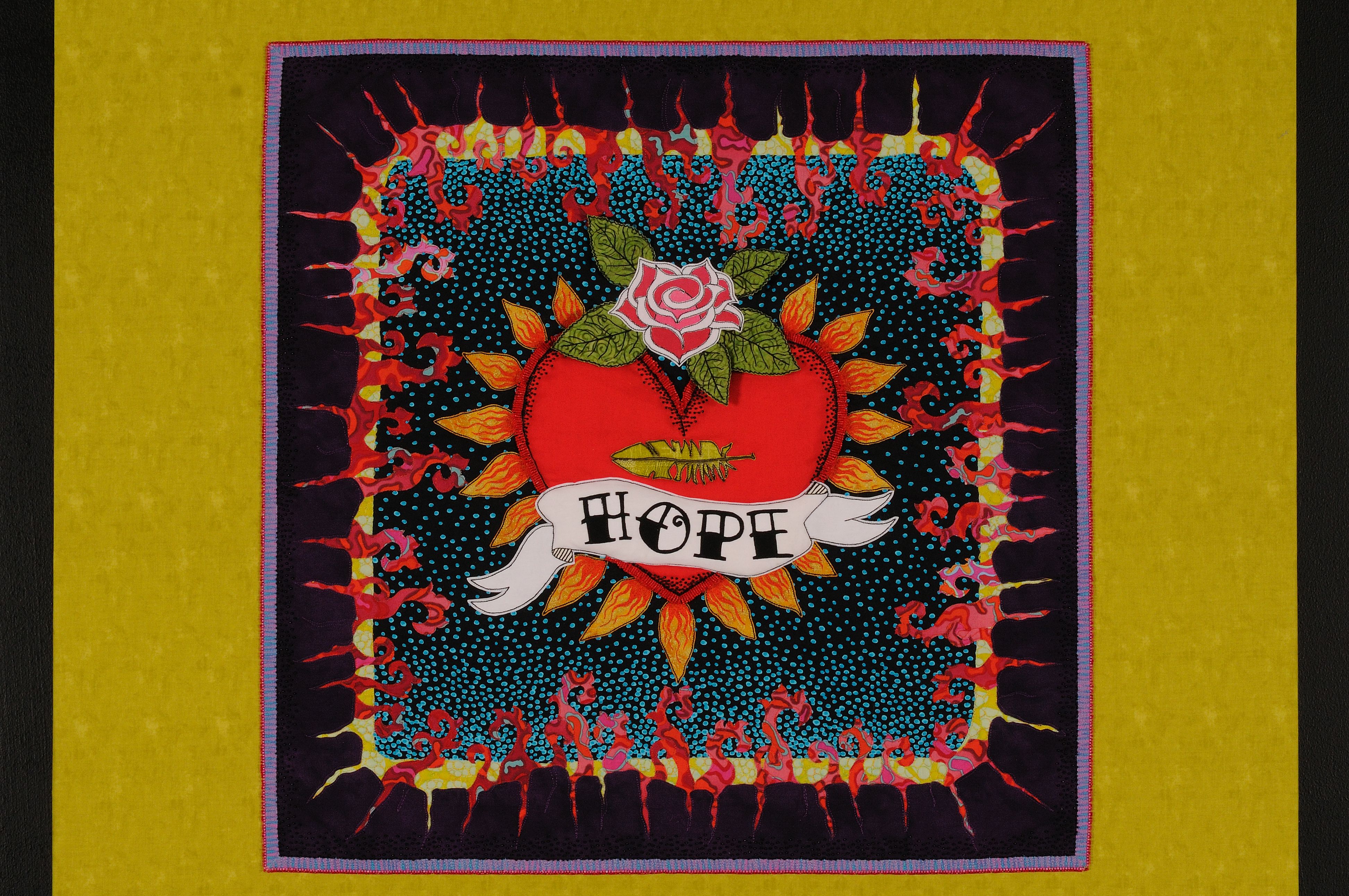By day, COB academic advisor, Diane Skidmore engages both her social and conventional side through helping students plan their life and career objectives. By night, Skidmore taps into her artistic side through creating unique interpretations of fiber art, stemming from a deep-rooted history in the traditional art of quilt making.
Skidmore’s female ancestors made quilts dating as far back as to the Oregon Trail in the 1800s. According to Skidmore, women making quilts in the mid-nineteenth century referred to women’s periodicals for patterns and kits that featured the latest trends in quilt making. Though her ancestors’ quilts were made strictly for utilitarian purposes, the art of working and manipulating fibers with your hands was not lost on Skidmore. Skidmore said, “The handwork is the continuing thread between generations and learning how to manipulate thread to fabric beautifully by hand is now seen as unattainable. My daughter teaches elementary art and notices that fine motor control is not as present in children as it once was. Children enjoy working with their hands.”
Skidmore remains mindful of traditions while her own craft continues to evolve. Skidmore said, “I’ve left a lot of traditional colors and geometric, color-block types of quilts behind. I’m a part of a progression. Modern quilting is the current movement.” Skidmore explained that her art quilts sit in between that of the twenty to thirty-something person behind today’s modern quilt and the “grandma quilts” of the past. Skidmore added, “I want to stick wires and embroider and further manipulate the fabric.”
“Women’s art has always been underrated for a number of years and done for utilitarian purposes, like mending clothes and making quilts. In the last 10 to 15 years, strictly quilt makers and people working with fibers are doing other things for art sake. And the credibility for that has grown.”
Over the past four decades of working with fiber and fabric, Skidmore has questioned common misconceptions and strict definitions regarding quilt making. And viewers are, too. Skidmore stated, “Women’s art has always been underrated for a number of years and done for utilitarian purposes, like mending clothes and making quilts. In the last 10 to 15 years, strictly quilt makers and people working with fibers are doing other things for art’s sake. And the credibility for that has grown.”
In 2013, the Studio Art Quilt Associates juried travelling show, “Text Messages” accepted Skidmore’s quilt, “‘Hope’ is the thing with feathers.” The title comes from an Emily Dickinson poem, and plays upon the design, which further manifested itself while Skidmore was sitting in a tattoo parlor. The vibrant quilt juxtaposes blown up vintage imagery found adorning the tattoo parlor’s walls—banners, hearts, and flames—with intricately hand-sewn beadwork and embroidery. Currently, the quilt is being shown at the Morris Museum in Morristown, New Jersey. Another quilt of Skidmore’s was showcased this year at the McLean County Arts Center in Illinois Quiltscape, an exhibition of Art quilts made in Illinois.
Skidmore stretched further beyond conventional quilt making as evident in her quilts, and perhaps even more so in her three-dimensional artwork. Skidmore stated that the three-dimensional pieces pictured on her website exemplify “something people can wrap their heads around . . . a piece of art that is accessible and doesn’t cover the whole wall or bed.”
There is no doubt Skidmore will continue to create and to remain relevant in the fiber art world, as her creative muse abounds. Skidmore said, “You train your eye to see beauty in the world and that’s where a lot of my ideas originate from. There is such beauty out there to take ideas from.” As her retirement approaches, Skidmore intends to continue developing her artistic submission resume. To learn more, visit Skidmore’s website: http://didisart.weebly.com/.
Please view Skidmore’s work displayed in the Studio Art Quilt Associates juried travelling show.

